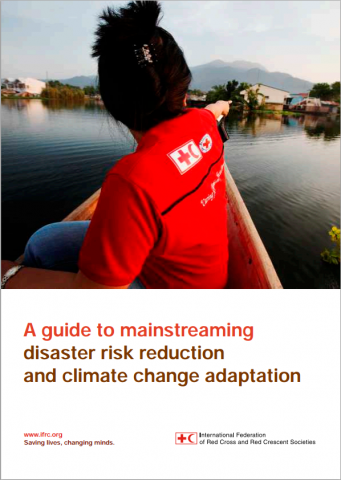Guidance material
A guide to mainstreaming disaster risk reduction and climate change adaptation


This guide has been developed to specifically support Red Cross and Red Crescent Societies and IFRC staff to more systematically integrate risk reduction measures into their planning. By describing in detail what key issues need to be considered and when, this guidance aims at ensuring that risk reduction measures are taken into account in different sectors and contexts. It also details the key elements that need to be in place to create an enabling environment. Published in 2013.
